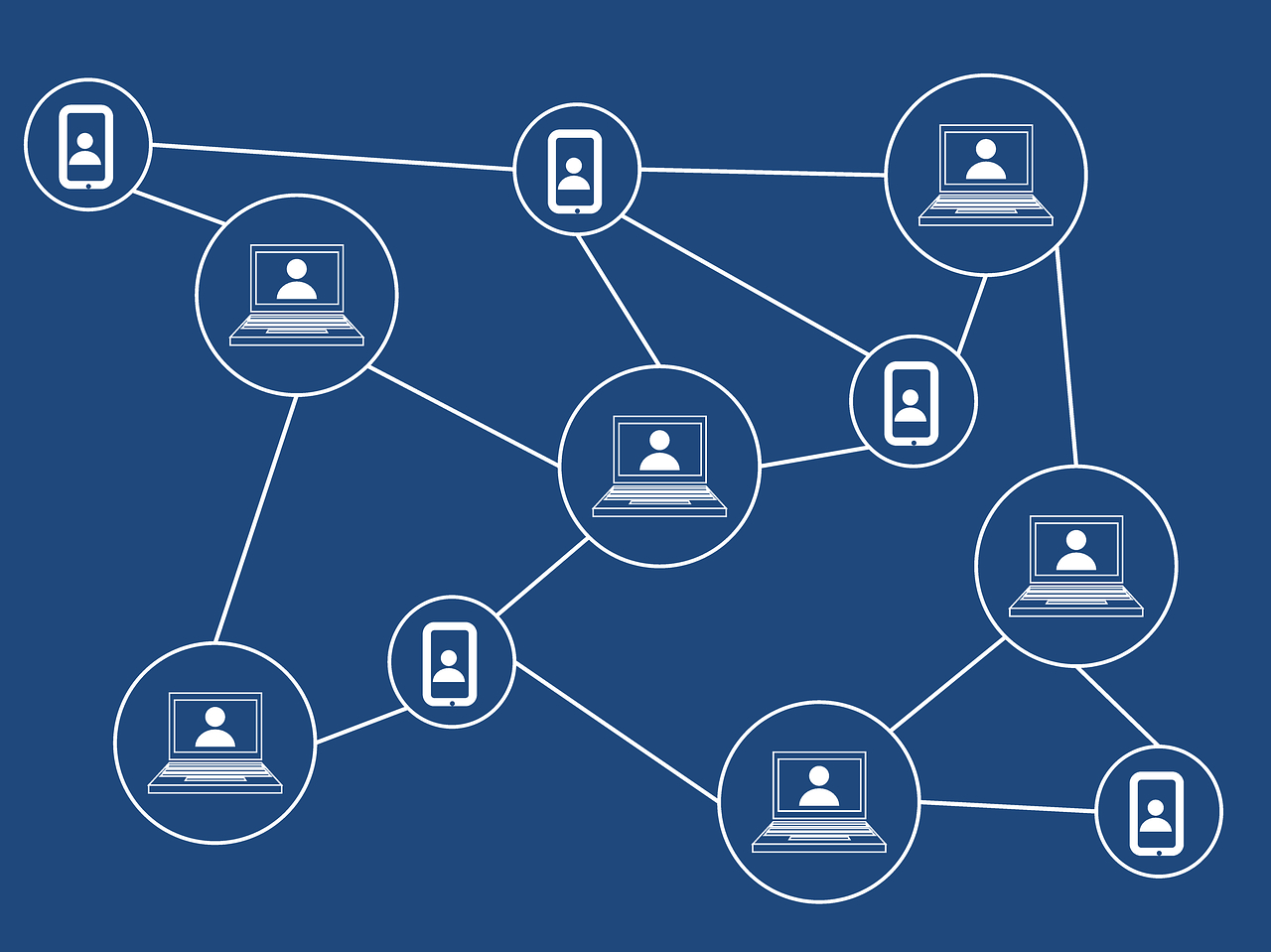How to Ensure Security, Privacy and Control of Blockchain Transactions – Cryptopolitan

The rise of blockchain technology has paved the way for decentralized and secure transactions. Blockchain is a distributed ledger system used to record transactions in a transparent and secure manner. Its use is rapidly expanding across industries, from finance to healthcare, as it provides a secure way to manage data and transactions.
Blockchain transactions are secured using cryptography and are immutable, meaning they cannot be changed or tampered with once recorded on the blockchain. This makes blockchain transactions very secure. However, to ensure that blockchain transactions are safe, various security measures must be implemented. In this article, we will explore the various security, privacy and control measures used to protect blockchain transactions.
Blockchain security measures
Blockchain transactions are secured using cryptography. Cryptography is the practice of secure communication in the presence of third parties. It involves encoding information in a way that makes it unreadable to anyone except the intended recipient. In blockchain, cryptography is used to secure transactions and protect them from unauthorized access.
Here are some of the main security measures used to protect blockchain transactions:
Hashing
Hashing is a basic security measure used in blockchain to ensure the integrity and immutability of data. A hash function is a mathematical algorithm that takes an input of any size and produces a fixed-size output known as a hash. In blockchain, hashing is used to generate a unique digital fingerprint, or hash, of each transaction. This fingerprint is used to ensure that the transaction cannot be tampered with or changed.
Hashing has several key properties that make it a useful blockchain security measure. First, hashing is a one-way function, meaning that it is easy to calculate the hash of an input, but it is practically impossible to reverse the input from the hash. This property ensures that the data remains confidential and cannot be accessed by unauthorized parties.
Second, hashing is deterministic, meaning that given the same input, a hash function will always produce the same output. This property ensures that the same data always produces the same hash, making it easy to compare hashes and verify the integrity of data.
Third, hashing is unique, meaning that two different inputs will produce different hashes. This property ensures that each transaction on the blockchain has a unique hash, making it impossible for two transactions to have the same hash.
To ensure the security of blockchain transactions, each transaction is hashed and added to a block. Each block in the blockchain contains a hash of the previous block, creating a chain of blocks that is tamper-proof. If a single transaction changes, the hash of the block containing that transaction will change, and all subsequent blocks will have to change as well, making it virtually impossible to tamper with the data without being detected.
In addition to ensuring the integrity and immutability of data, hashing is also used to protect users’ privacy. When a user sends a transaction on the blockchain, their personal information is not included in the transaction data. Instead, the transaction is hashed, and the hash is used to identify the user. This protects the user’s personal data and ensures their privacy.
Overall, hashing is a critical security measure used in blockchain to ensure the integrity, immutability and privacy of data. By generating a unique digital fingerprint of each transaction, hashing ensures that transactions cannot be tampered with or changed, and that users’ privacy is protected.
Digital signatures
Digital signatures are another important security measure used in blockchain to ensure the authenticity and integrity of transactions. A digital signature is a mathematical technique used to verify the authenticity of a message or document. In blockchain, digital signatures are used to ensure that each transaction is authorized by the sender and cannot be tampered with.
When a user sends a transaction on the blockchain, they sign the transaction with their private key, which is a secret key known only to them. The private key is used to generate a digital signature for the transaction, which is unique to that specific transaction. The digital signature is then added to the transaction data and broadcast to the network.
To verify the authenticity of the transaction, the recipient of the transaction can use the sender’s public key to decrypt the digital signature. If the decrypted digital signature matches the hash of the transaction data, the transaction is considered authentic and has not been tampered with. This process ensures that only the sender of the transaction could have created the digital signature and that the transaction data has not been altered during transmission.
Digital signatures provide a strong layer of security for blockchain transactions, as they ensure that only the authorized parties can sign transactions and that the data cannot be tampered with. This makes it virtually impossible for attackers to intercept and modify transactions or impersonate users.
One of the main advantages of blockchain digital signatures is their ability to prevent double spending, which is a common problem in digital transactions. Double spending occurs when a user tries to spend the same digital currency twice. In blockchain, digital signatures ensure that each transaction is unique and cannot be duplicated, preventing double spending.
In summary, digital signatures are an important security measure used in blockchain to ensure the authenticity and integrity of transactions. By using a sender’s private key to generate a unique digital signature, blockchain ensures that only authorized parties can sign transactions and that the data cannot be tampered with. This provides a strong layer of security for blockchain transactions, prevents double spending and ensures the trust and integrity of the blockchain network.
Consensus algorithms
Consensus algorithms are a crucial security measure used in blockchain to ensure that transactions are validated and recorded accurately and securely across the network. In a decentralized blockchain network, there is no central authority to verify transactions and ensure the integrity of the network. Consensus algorithms provide a way for nodes on the network to agree on the state of the blockchain and ensure that all transactions are valid and recorded correctly.
There are several consensus algorithms used in blockchain, including Proof of Work (PoW), Proof of Stake (PoS), and Delegated Proof of Stake (DPoS). Each consensus algorithm has its own set of rules and requirements to validate transactions and achieve consensus.
Proof of Work is the original consensus algorithm used in Bitcoin and many other cryptocurrencies. In PoW, nodes on the network compete to solve a complex mathematical problem, with the first node to solve the problem receiving a reward and the right to add a block to the blockchain. This process is resource-intensive, and requires considerable computing power and energy consumption.
Proof of Stake is a newer consensus algorithm designed to be more energy efficient than PoW. In PoS, nodes on the network stake a certain amount of cryptocurrency as collateral to validate transactions and achieve consensus. The more cryptocurrency a node stakes, the more likely it is to be chosen to validate transactions and add blocks to the blockchain.
Delegated Proof of Stake is a modified version of PoS that allows nodes to vote on a set of delegates to validate transactions and add blocks to the blockchain. This consensus algorithm is designed to be more democratic and efficient than PoW and PoS, as it allows nodes to choose a set of trusted delegates to represent them in the validation process.
Consensus algorithms are essential to the security and integrity of blockchain networks, as they ensure that all transactions are validated and recorded correctly across the network. By requiring a significant amount of computing power or effort to participate in the validation process, consensus algorithms prevent malicious actors from manipulating the network and ensure that only trusted nodes are involved in the consensus process.
In summary, consensus algorithms are a critical security measure used in blockchain to ensure the integrity and security of transactions. By providing a way for nodes on the network to agree on the state of the blockchain, consensus algorithms ensure that all transactions are validated and recorded accurately and securely. Different consensus algorithms have their own advantages and disadvantages, and the choice of consensus algorithm depends on the specific requirements and goals of the blockchain network.
Encryption
Encryption is used to protect data stored on the blockchain. It involves encoding data in a way that makes it unreadable by anyone except the intended recipient.
Recent Examples of Blockchain Security
Blockchain technology is used in various industries to provide secure and transparent transactions. Here are some recent examples of how blockchain is being used to ensure the security of transactions
Health Service
In the healthcare system, blockchain is used to ensure the security and privacy of patient data. For example, MedRec is a blockchain-based system used to securely store and share medical records. MedRec uses encryption to protect patient data and digital signatures to ensure the authenticity of transactions.
Finance
In finance, blockchain is used to secure transactions and prevent fraud. For example, Ripple is a blockchain-based payment system used by banks to facilitate cross-border payments in a secure manner. Ripple uses a consensus algorithm to validate transactions and ensure that all nodes on the network agree on the state of the blockchain.
Cyber security
Blockchain is used in cyber security to prevent cyber attacks and protect data. For example, Guardtime is a blockchain-based system used to secure critical infrastructure, such as power grids and transport systems. Guardtime uses hashing to generate a unique digital fingerprint of data and ensure that it has not been tampered with.
Supply Chain Management
Blockchain is used in supply chain management to ensure the authenticity of products and prevent counterfeiting. For example, Walmart uses blockchain to track the origin of food products and ensure they are authentic. Walmart’s blockchain-based system uses digital signatures to ensure that products are tracked by authorized users.
Blockchain technology has many use cases in cybersecurity, including identity management, secure data sharing, and secure communications. By leveraging the transparency and immutability of blockchain, organizations can improve their security and privacy measures and reduce the risk of data breaches and other cyber threats.
Finally, blockchain technology can also enable privacy by providing a way for users to control their own data and share it only with trusted parties. Through techniques such as zero-knowledge proofs and private transactions, blockchain technology can ensure that sensitive data is kept secure and private while transactions can take place.
To summarize, blockchain technology offers a powerful tool to improve security, privacy and control of transactions in a variety of settings. By leveraging the inherent immutability, transparency and decentralization of blockchain, organizations can improve their security and privacy measures and reduce the risk of cyber threats. As the technology continues to evolve and new use cases emerge, it is likely that blockchain will become an increasingly important tool in the fight against cybercrime and to protect sensitive data.























